Blog
stories • happenings • adventures
The First Rookie To Win The Iditarod Trail Invitational 350 – Q&A with Kurt Refsnider
After four days of racing on the iconic sled dog course, Revelate ambassador Kurt Refsnider just became the first rookie to take the overall win at the Iditarod Trail Invitational 350. Amid some of the toughest conditions in years, racers pushed through fresh snow, 50 mph winds, drifted-in trails, and overnight temperatures that dipped to nearly -50 degrees. Kurt’s lack of experience in this type of event was offset by his well of learning from a decade of mountain bike ultras. After a few days of back-and-forth riding and racing with veterans Tyson Flaherty and Clinton Hodges, Kurt decided it was time to make a move, and with 50 miles to the finish, he went all-in with an attack and held a small margin to the end. While Kurt was recovering in McGrath, Kait Boyle, who had an opportunity to train with Kurt this winter, asked him some questions about his winning ride.
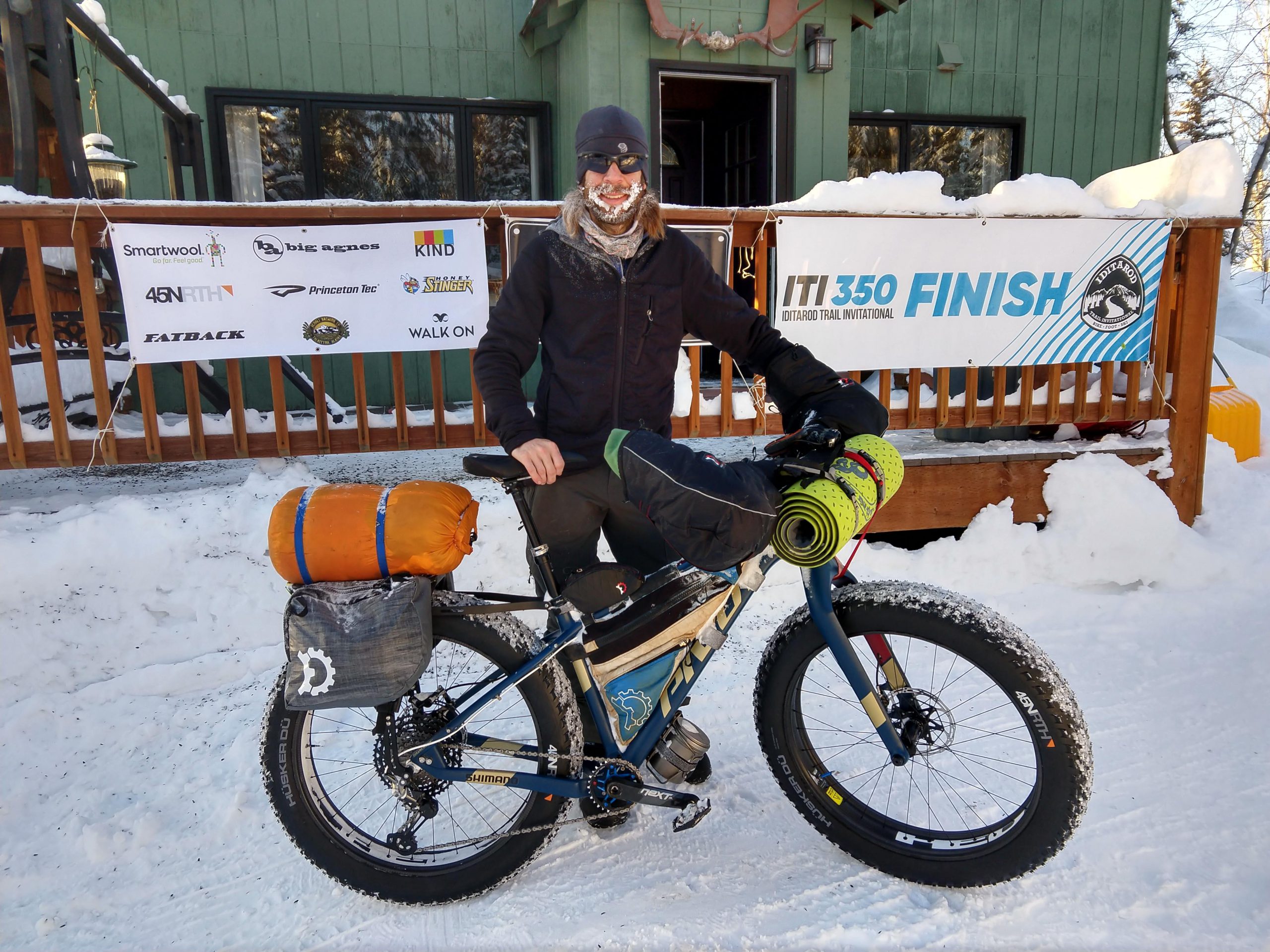
The first into McGrath, Kurt at the ITI 350 finish.
First, A few details we’d love to hear:
Total Time: 4 days, 2 hours, 25 minutes
Favorite food/meal racing: Either my Ritz Bitz/Cheez-it/peanut mix or Muddy Buddies
Coldest Temp: -47F!!
Longest stint without sleeping: The first 38 hours
Total sleep: 11.5 hours – 0 hours the first night, then 6, 2, and 2.5 hours.
Interactions with the wild: Bison, moose, a wolf, eagles…but no encounters were concerningly close
Tools for staying warm: No sweat, a great system of socks, vapor barriers, and boot liners, and two puffy jackets
Tools for staying happy: Reminding myself that I chose this, and goggles that turned the snow tan and made it look like drifting sand
Highest moment: Sunrise while pedaling solo along the Kuskokwim River and the peaks of the Alaska Range; the final mile into McGrath when I realized I was actually going to take the win
Lowest/hardest moment: 15 hours of pushing across flat ground at -40 F just trying to reach the Nikolai checkpoint
What kept you motivated? The newness of it all and feeling so fortunate to have the opportunity to race on such an iconic trail with some seriously talented and friendly competition.
This year’s race was defined by really tough conditions. Were you happy out there? Did you have fun? If so, why/how?
I was fortunate that given my lack of perspective for winter riding conditions, especially on this trail, I simply didn’t know what was “normal” and what was extraordinary. But conditions were rough. Fresh snow a foot or more deep to start, winds gusting to 50 mph for a day and a half straight, temperatures dropping to 40 degrees colder than I’ve ever experienced on a bike, endlessly drifted sections of trail, and aggressive moose all over the place were just some of the challenges. Add in some legitimate racing, a bit of sense of urgency to press on at all times, and sleep deprivation– all those other challenges become quite consequential very quickly. But despite all that, I really enjoyed where we were able to ride, the steadily changing landscape, the hugely encouraging volunteers at the checkpoints and lodges along the way, and being completely immersed in such a big, wild place. I only had a few low points, all occurring when my legs just ran out of juice or when I was struggling to simply stay awake.
What gear worked, what did you wish you had?
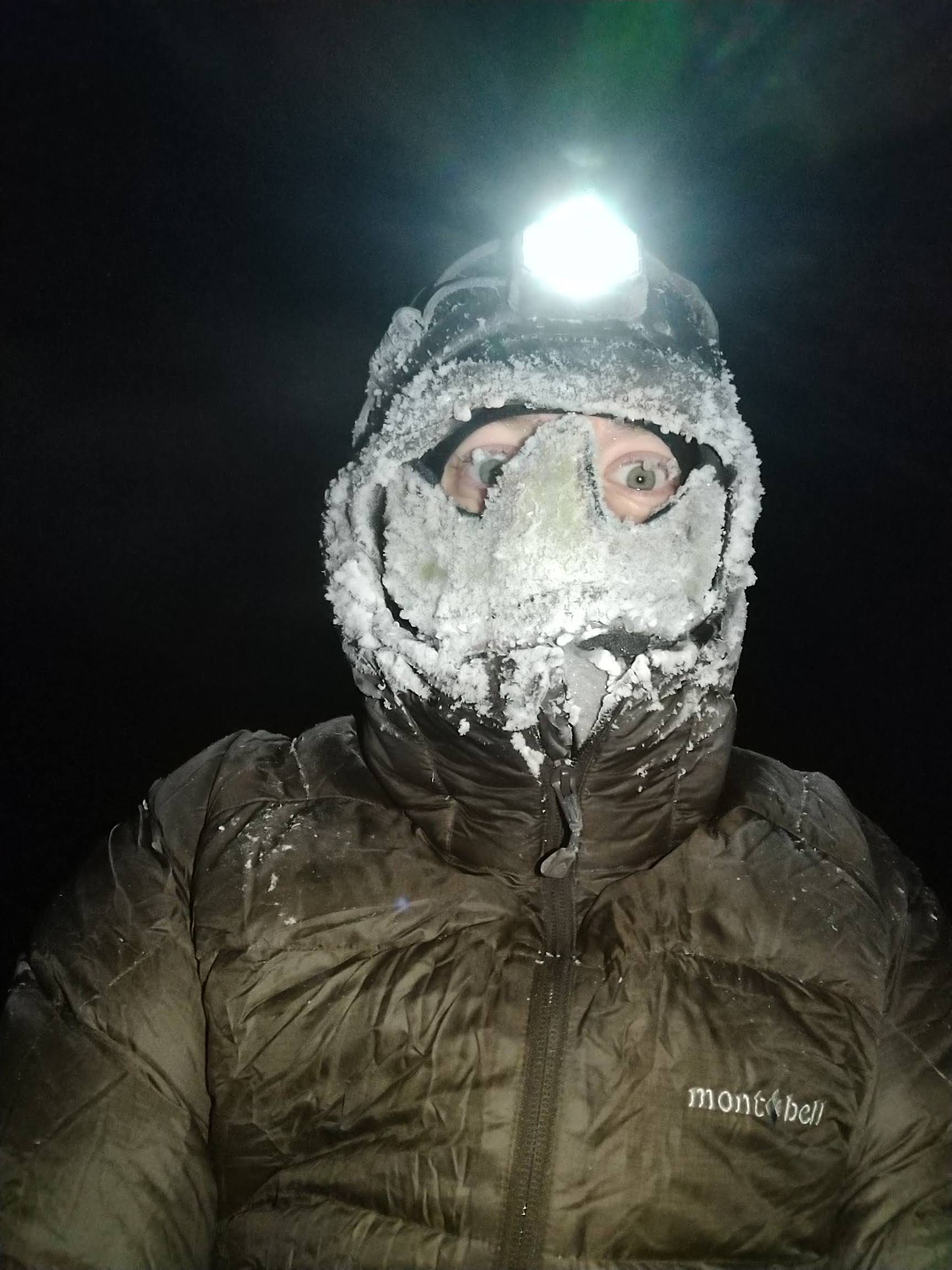
Kurt demonstrating the effects of -45F
All my gear was amazing, and I used virtually everything I packed aside from some spare parts. The bike worked flawlessly aside from a couple things I didn’t winterize sufficiently for temperatures as cold as we saw. I ran 45NRTH 4.8″-wide Husker Du tires on 100-mm-wide HED rims, and that floaty combination was perfect for conditions this year. I loved my Revelate Designs Expedition Pogies – I spent most of the race without even needing to wear gloves. My clothing system worked well, even at -40, although I wished I had a pair of puffy pants.
You have raced countless ultras and won/set records on nearly all of them. How does ITI stand apart from other ultras? What do you think led to your win.
This was one of the toughest events I’ve done, hands down, given the conditions this year and a couple incredibly strong veterans that were within an hour or two of me for the entirety of the race. Given my unfamiliarity with both the course and winter racing, I was patient for the first few days and simply rode a reasonable and very sustainable pace that kept me close to Tyson and Clint (and I only have one hike-a-bike speed in snow apparently). I spent a lot of time taking care of my body, pausing frequently to adjust layering so I wouldn’t sweat, eating a lot, and trying to drink enough. And then on the final morning with 50 miles to the finish, I sensed a bit of hesitation and fatigue in Tyson and Clint, and I launched a bit of a foolhardy attack, riding away as if I had just started a cross-country race. The hastily-fashioned goal was to simply get out of sight, but when crossing mile-wide swamps, getting out of sight is no small feat. But I went absolutely all in, and then I just had to dig for 6 hours and not let off the gas. Taking good care of my body over the prior days paid off, my energy was great, and I just had to believe in my legs to be able to keep going. It was a bit of a brute force strategy, but it worked. And somehow I became the first rookie to ever win the overall Iditarod Trail Invitational title.
You, Clint, and Tyson were close to each other until the last 50 miles of the race and then you made a move to “attack.” Your spot died with just 25 miles to go. Can you describe the race dynamic and those final hours after leaving Nikolai?
There were many miles over the first 3 days when I strained to keep from falling too far behind when Clint or Tyson were clearly feeling better than I was or when they were willing to dig deeper than I was. And there were many miles during which I simply followed their wheels and watched their tendencies, their riding style, their strengths, and what seemed like weaknesses. Even though we were working together at times, it was indeed a race.
I was hesitant to strike out on my own too soon. So I waited patiently, not one of my own strengths. Leaving Nikolai with 55 miles to the finish, I immediately was dropped. My legs gradually warmed up in the -30 F air, I peeled off a couple layers, and then gradually caught back up. Clint and Tyson’s pace had slowed, and they weren’t riding with their usual confidence and smoothness. My old road racing instincts perked up, and before I even had time to fully think anything through, I found myself out in front, out of the saddle, and digging deeply as if it was trying to escape the gravity of a charging peloton. The trail was finally fast and firm from a few sets of day-old snow machine tracks. I was absolutely flying, which was exactly 7 mph.
I had to get out of sight in order to have any chance of staying away. I crossed a small swamp, glanced back, and didn’t see anyone. The next swamp was longer. And the next longer yet, probably close to a half mile. I kept digging, now dripping with sweat. All in, I told myself, thinking of my friend Chloe Woodruff’s winning move in a World Cup short track last year. An hour passed. Then two. Attacks in ultras are excruciatingly long and relatively uncommon. Three hours in and I was still pushing hard. I had at least a 10-minute gap. After 5, I finally let myself back off just a little bit in order to ensure I didn’t totally crack. And after 6, I realized I had the win, quite unexpectedly.
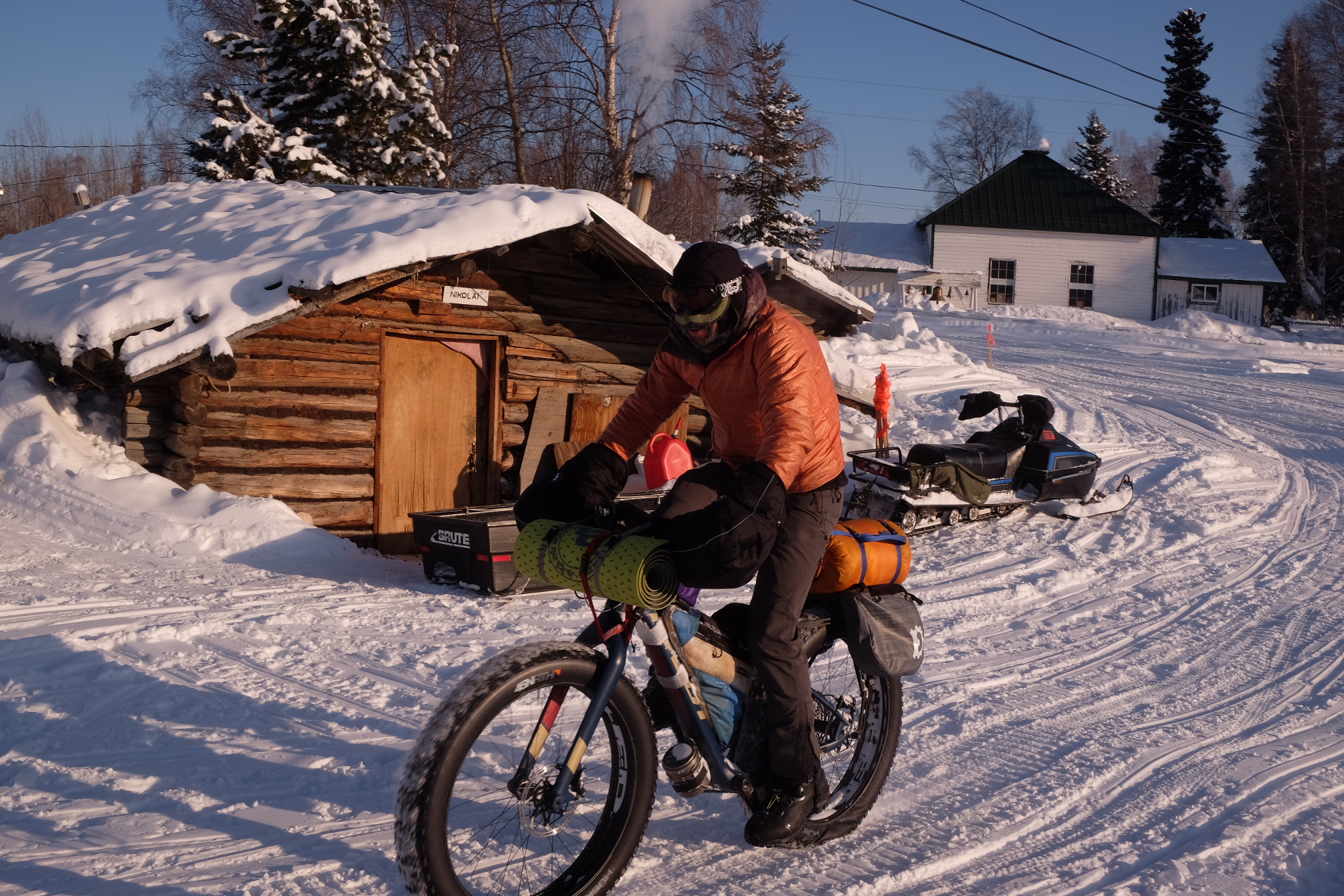
Kurt pedaling out of Nikolai. Photo by Nicholas Carman
It’s remarkable to win this race as a rookie and in your first time in Alaska. What do you think contributed to this success?
It’s been said by many veteran racers that winning the ITI as a rookie is a nearly impossible feat, particularly for cyclists. There is always an abundance of experienced veterans in the field. Navigating and pacing oneself through the highly variable terrain and trail conditions is particularly challenging, and maintaining a strong mental focus can be tough amid such unfamiliarity. A few years back, Eszter Horanyi, a rookie, was the first woman to finish. Though numerous rookies on foot and ski have won their categories, until this year, the overall win had never gone to a rookie. I think my decade of ultra racing experience helped hugely – I was able to take good care of my body and pace conservatively for the first 3 days, so by the 4th when I finally made a move, I was still feeling relatively good overall. I had no trouble staying on top of my nutrition plan, taking in 300+ calories per hour for most of the race. I absolutely loved the landscape through which we were racing, and that really contributed to a very positive mindset throughout. Spending time riding with or closely chasing a couple strong veterans also really helped provide additional motivation, inspired confidence in my own abilities, and in a few spots, helped make navigation more efficient. But when it came down to those final miles, it came down to brute force and a willingness to take a big risk and launch an attack from 50 miles out. And fortunately, my impromptu strategy there got me to the finish first.
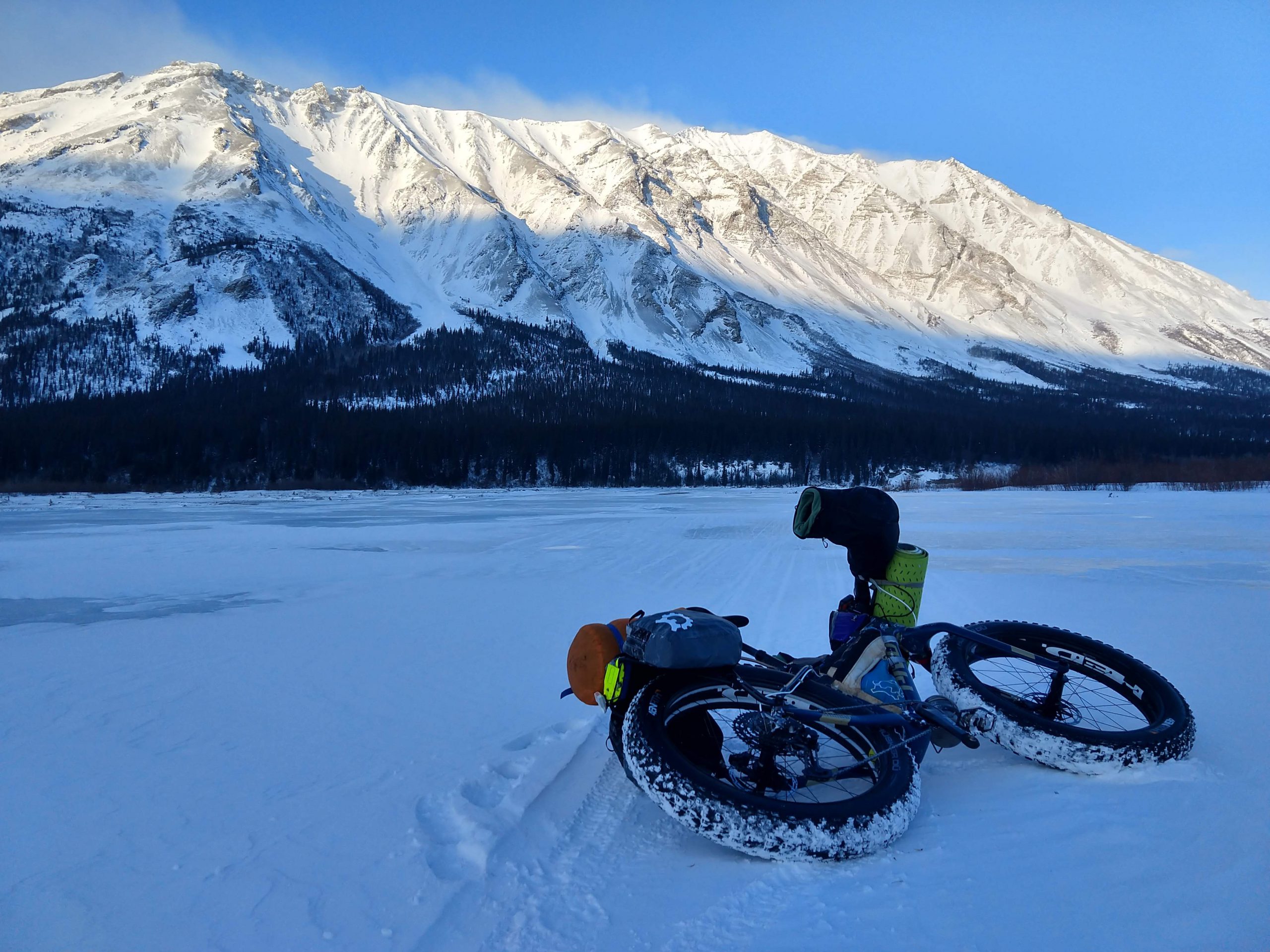
Photo by Kurt Refsnider
Describe your highlights and challenges of this race.
Crossing 300 miles of wild landscape that’s mostly impassable any time of year other than during the month of March was tough to comprehend – so many miles of frozen rivers, swamps, crossing the mighty Alaska Range, and then more swamps, dwarf forests, and lakes. I relished watching the sun set so slowly from the southern side of the Alaska Range and then seeing the sun rise again from the opposite side of the mountains. I learned so much, and being able to share some time riding with veterans Tyson Flaharty and Clint Hodges was quite enjoyable. Challenges were too many to list – deep fresh snow that was impossible to ride for long stretches, followed by a 36-hour wind event that blasted racers with 50 mph gusts, completely drifted in the trail, and dropped visibility to zero at times. Any exposed skin would freeze in minutes at -25 degrees of that strength. Eventually the wind died, and the temperature plummeted to nearly -50 degrees, my bike almost stopped rolling, the trail became unrideably soft, and literally walked all night to reach the checkpoint in Nikolai.
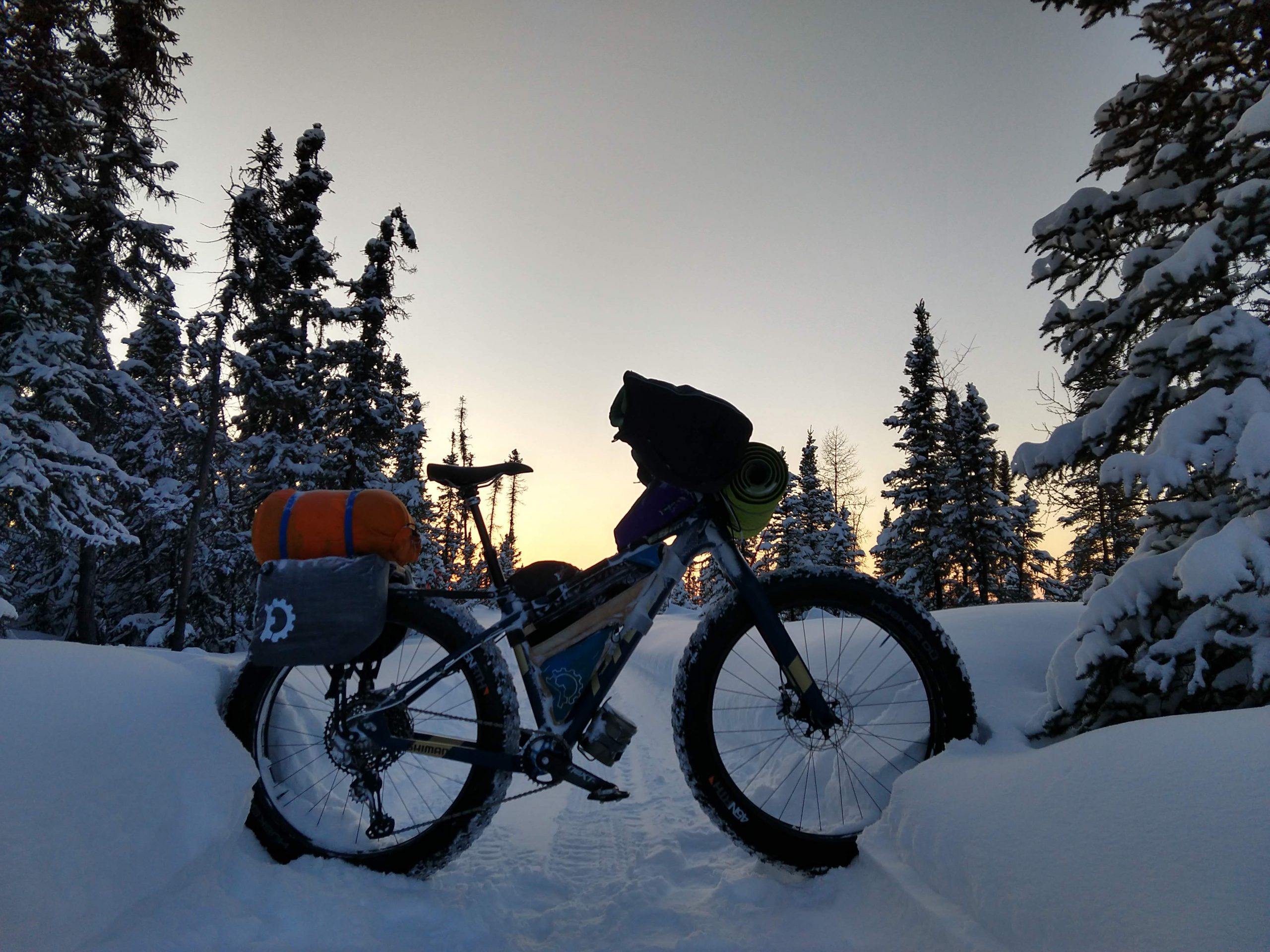
Photo by Kurt Refsnider
Kurt enjoys conducting sleep deprivation experiments on himself, the trials usually begin after riding 200 miles of singletrack and don’t stop until his GPS says so. Kurt is a veteran of the AZT300 & holds the record for the AZT750 as well as being a multi-time finisher / pace pusher of the Tour Divide. He’s also a PhD Geologist professor at Prescott College. He has has lead student groups on “Geology by Bikepacking” classes and runs a consulting service Ultra MTB Consulting. His most recent project is advocating for the advancement of bikepacking and landscape conservation through Bikepacking Roots. Kurt seriously gets after it.
